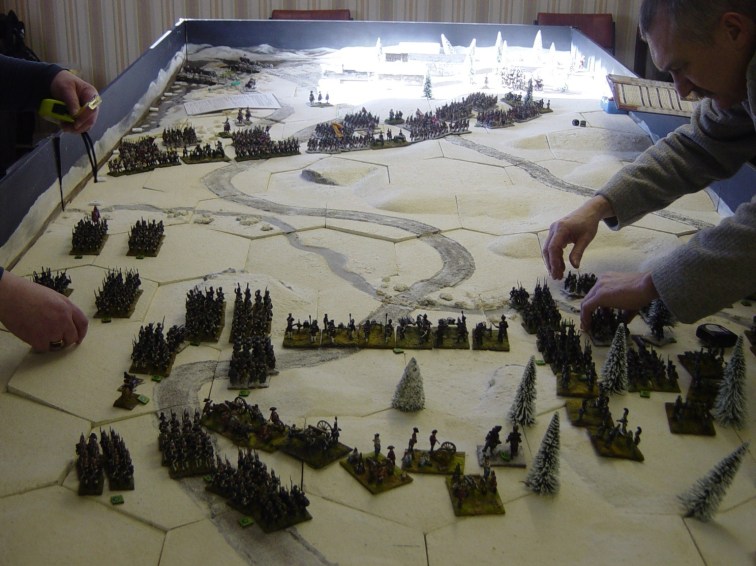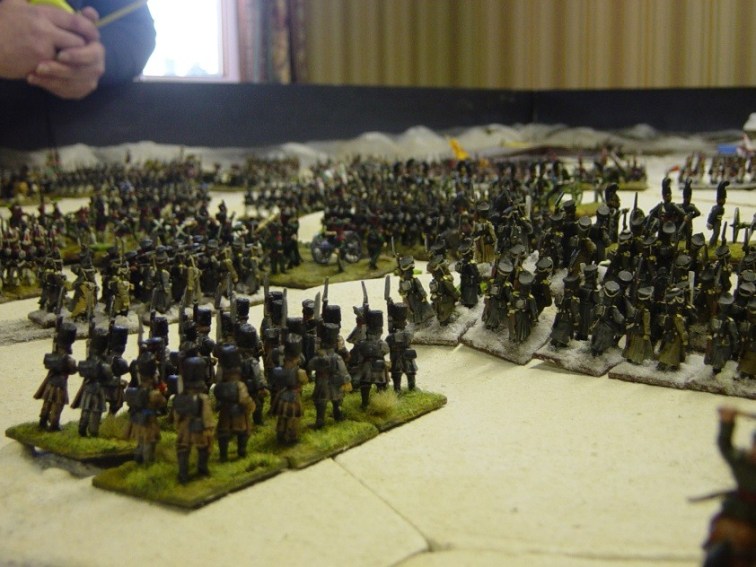words by Alastair, photos by Mike.
OWG’s Sunday Game on 8.2.15 was Studyanka, the rearguard action on the east bank of the Berezina. The object for the Russians was to seize the bridges before sunset. We used General de Brigade rules that had been used in a previous refight of the scenario. That refight chalked up a victory for the French but at high cost and like the historical battle, a cavalry action put an end to Russian hopes. This time the forces were at full strength. From Count Wittgenstein’s 1st Corps, 15,000 Russians were pitted against 7,400 troops from Victor’s IX Corps, almost entirely Germans and Poles. Wittgenstein chose to remain at Borisov with his other troops and the force was placed under the command of Major General Vlastov of the Advance Guard. It soon became clear that the Russians were going to find it difficult to make their superiority in numbers tell.



After about sixteen turns, representing four hours from 0900 to 1300, real time ran out. Victor showed no sign of giving ground. The layout, with play along the length of the table, limited the scope of the attacks and negated the one area of weakness on the French left wing. Rather than a “gung ho” approach, a prolonged bombardment might have been more effective in this situation. The Russians with 60 pieces at his disposal, had more than twice the French player’s guns (including the twelve 12-pdr cannon on the west bank.)
The absence of Wittgenstein and the rules for changing orders exposed the inefficiency of the Russian command. Also brigade orders require 50% of units to follow the conditions and some Russian brigades were difficult to handle with this restriction. For example, the reinforced Advance Guard brigade resembled a miniature army, comprising two battalions each of line infantry and Jager, two regiments of Dragoons, two batteries of artillery and a unit each of Cossacks and militia; finding a suitable order might be difficult. Russian brigades may seem large compared with other nationalities. Berg’s brigade comprised 8 units of Line Infantry, 3 of Jager and militia and two of artillery.
